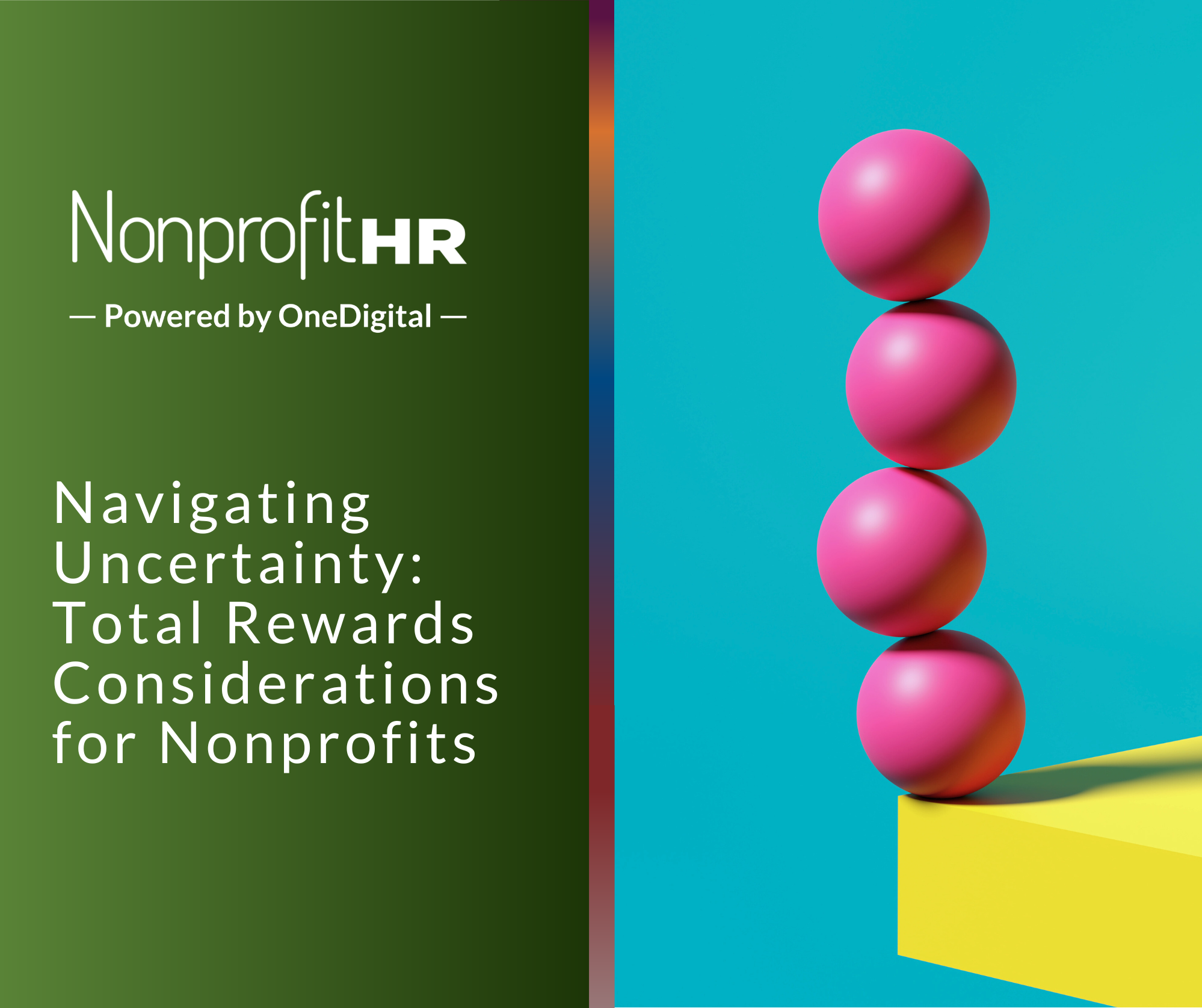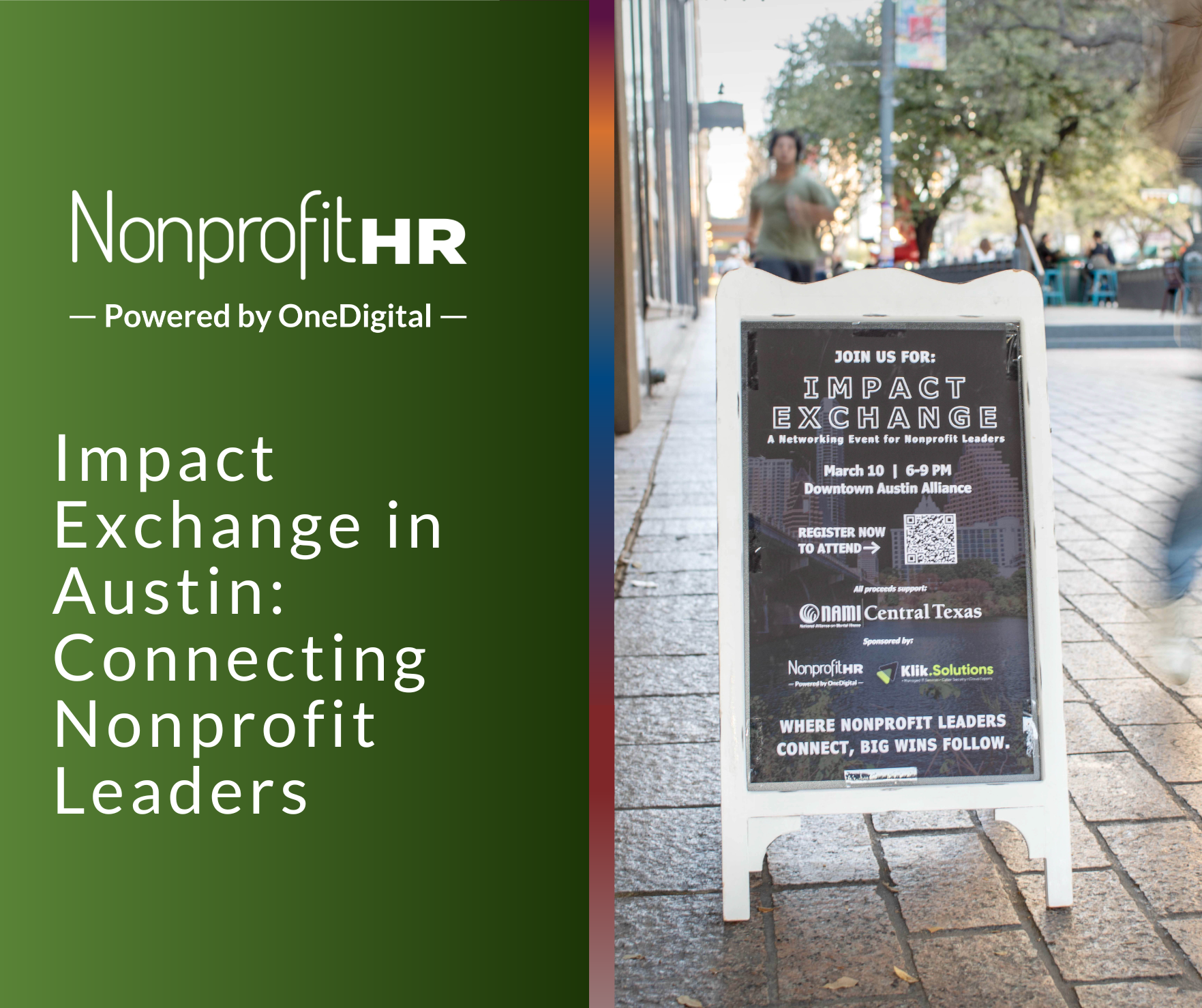WTOP: 5 ways nonprofits can…
HR metrics––also commonly referred to as an HR scorecard or dashboard, workforce and compliance statistics, key performance indicators (KPIs) or HR analytics––allow your organization to gather information from the past and present to forecast the future. These metrics can add strategic value to leadership decision-making by measuring the cost and impact of your talent related programs, and in turn, helping you improve organizational development, employee effectiveness and competitiveness as an employer.
When you can see the quantitative impact of HR’s actions, you can provide that data to board members, donors, funders, staff and other key stakeholders to advocate for changes that will even further increase productivity, employee engagement and overall team satisfaction.
The right HR metrics to collect and assess vary by organization, and for some, it may be intimidating to assign numerical values to human capital observations. Don’t be intimidated; once you get started, finding and benchmarking metrics will provide tremendous value to your HR practices.
To avoid common pitfalls when tracking #HR metrics, follow these best practices: Share on XWhy do HR metrics matter?
People drive performance. Particularly in our modern knowledge-based economy, human capital is any nonprofit’s greatest asset. Because your people are so important and your organization’s success is contingent on their performance, you should take steps to optimize your people investment.
Metrics are more than just data. They lead to better decision-making, greater investment in your people and highlight the strategic value of your organization’s HR function. To build that strategic value, HR must play a role in empowering your organization’s people to deliver on your mission to the communities you serve.
Identifying Appropriate HR Metrics for Your Organization
There are two types of HR metrics: human capital metrics and human resource productivity measures.
Human capital metrics measure optimization of human capital and organizational results, and include recruitment metrics, benefits and compensation metrics, employee demographic metrics and employee engagement metrics.
Human resource productivity measures assess the ability, efficiency and effectiveness of the HR department itself. Examples include HR to full-time employee staff ratio, cost of HR per employee and HR to total operating expense ratio.
To determine the right HR metrics to collect and proactively address for your organization, first consider what you hope to achieve in regards to your people. Organizational strategy, goals and plans will inform HR’s workforce strategies. Ask yourself specific questions like these about how your human capital relates to your organizational goals:
- What are the capabilities that my organization must have to create services/programs that donors and other supporters want to contribute to?
- Are the skills and abilities of our staff enabling us to understand and respond to short-term and long-term demands of the communities we serve?
- Is our investment in HR practices delivering impactful results for staff, leadership and the community?
What will be most important in helping your organization achieve its goals? Are you looking for increased productivity, increased return on investment of salaries, increased employer competitiveness or increased employee satisfaction? Focus on the metrics that will shine the light on the areas that most need improvement.
In a past article, we suggested 10 specific HR metrics your organization should consider tracking. You can view the list by clicking the button below.
Analyzing and Benchmarking HR Metrics
As you analyze your HR metrics, your goals will be to:
- Identify problems or opportunities
- Develop workforce goals and objectives aligned with your organization’s strategic plan
- Develop methods to achieve them
- Determine how to assess and monitor future performance
Organize your data by considering what is meaningful and valuable for right now versus what is interesting and may be worth keeping in mind for the future. What story does the data tell? Were there any suspected pain points you’ve been able to confirm with hard evidence? Next, you can develop a plan to address issues highlighted by data.
A major component of analyzing your metrics will be benchmarking them against your own past numbers and those of your competition or other similar organizations. However, in order to accurately benchmark, compared data definitions, calculations, timeframes and methods of collection must match.
Beyond simply comparing your HR metrics to others, benchmarking adds credibility to your numbers, helps you learn from other organizations and build momentum for you to make necessary changes to meet your HR goals.
Benchmarking Resources
To help you more accurately assess your data, you can reference these reports, surveys and other resources:
- Bureau of Labor Statistics (BLS) – Hires and Turnover Data
- Bureau of National Affairs (BNA)
- Nonprofit Employment Practices Survey
- SHRM Benchmarking Service
Common Pitfalls and Best Practices
Many organizations that are just getting started tracking HR metrics fall into similar patterns. They may try to track too many metrics and lose focus on human capital goals. Or, they may keep analysis too closely aligned with HR administrative tasks and fail to connect metrics to overall goals and mission.
To avoid common pitfalls, follow these HR metrics best practices:
- Consider organizational strategy, program and operational goals. As you track, analyze and benchmark your HR metrics, keep your eye on what information is most meaningful and how that data informs your strategy.
- Collaborate with others. Get input from your operations team and program leadership on how they believe HR initiatives contribute to their success. Connect with your finance team about specific measures you’ll use and measures they think will be most valuable for them as well.
- Start small. Identify two or three metrics that will clearly communicate HR’s impact. If you don’t have access to resources to collect data for your entire organization, initially focus on a smaller department, program or grant initiative and work to expand your efforts in the future.
- Ensure there is accountability for metrics. Build tracked metrics into job descriptions and integrate them into team member performance evaluations. Set rewards for hitting important goals and recognize a job well done when applicable.
- Carve out adequate time for metrics. Accurately monitoring HR metrics requires ongoing attention––it’s not a project to simply check off your to-do list. Put ongoing systems in place and turn data collection and analysis into a routine.
With the right measurement processes in place, your organization can perfect its people practices and amplify its impact. If you need additional assistance finding the right metrics to assess and benchmark in order to achieve your organization’s goals, our HR consultants can help. Contact us today to start a conversation about what we can do for you.






























